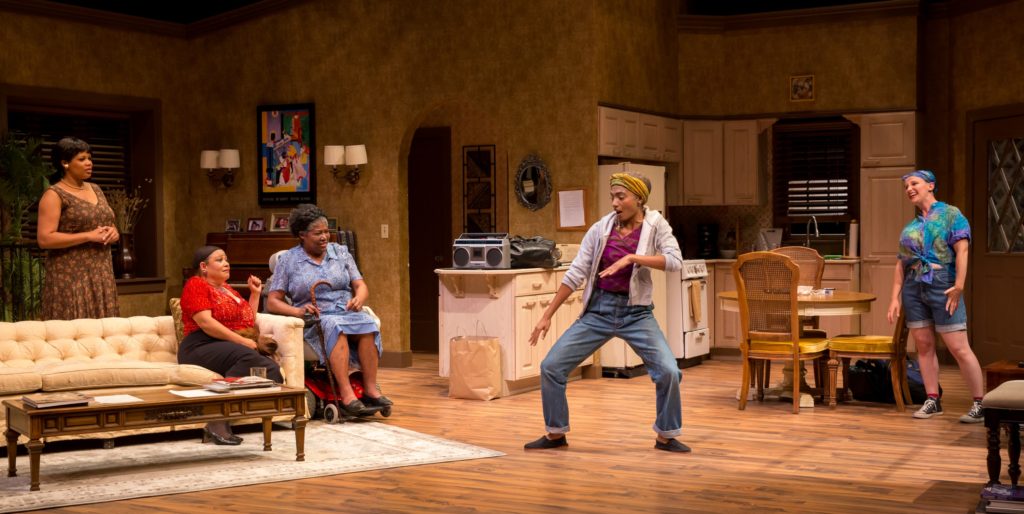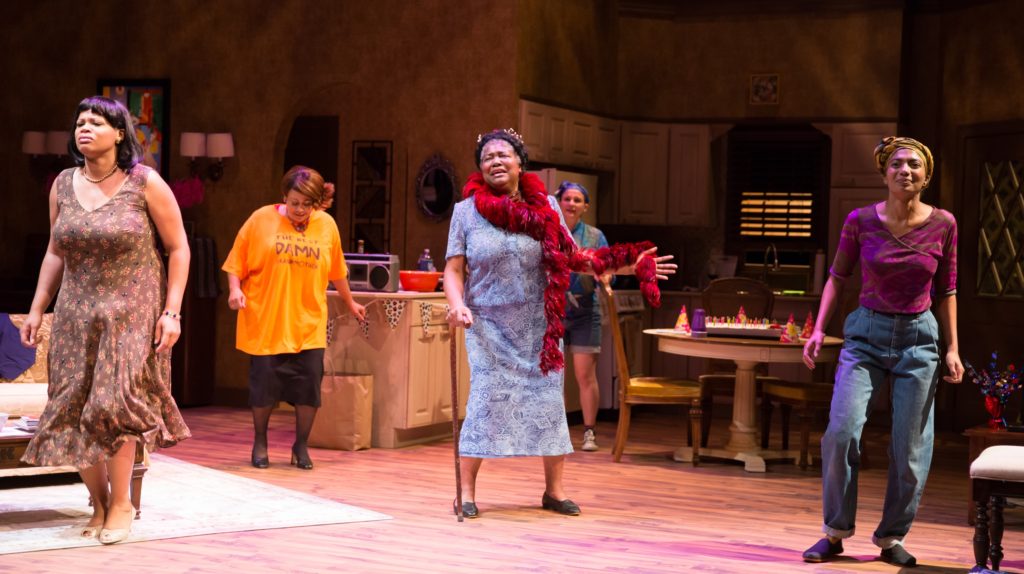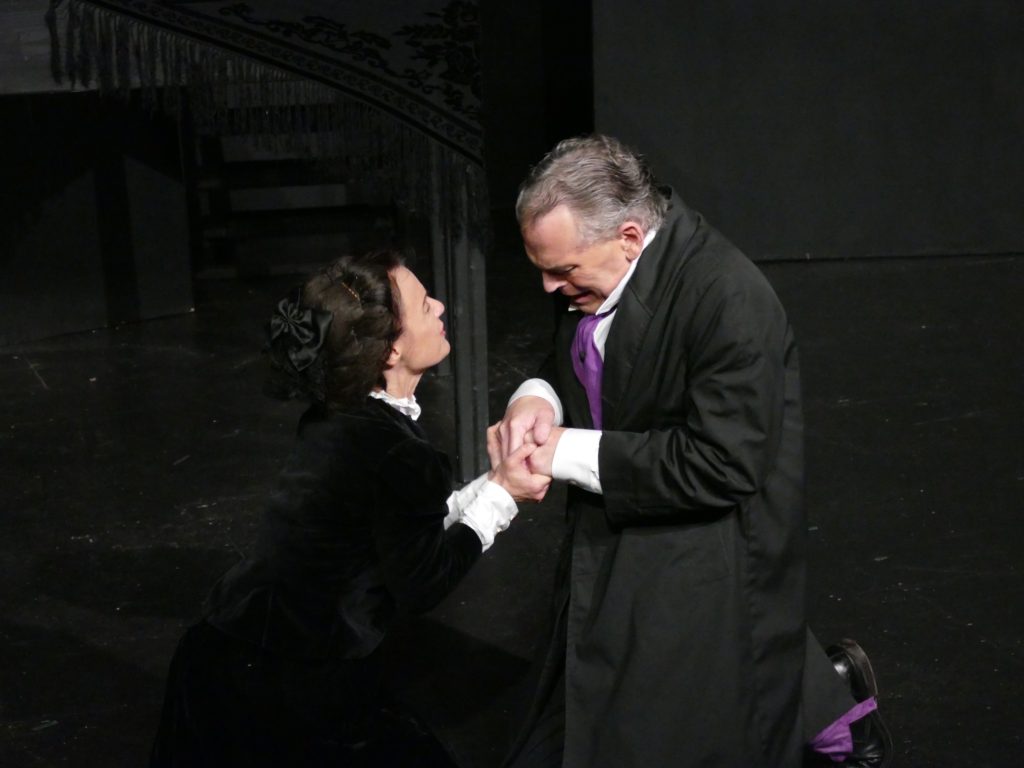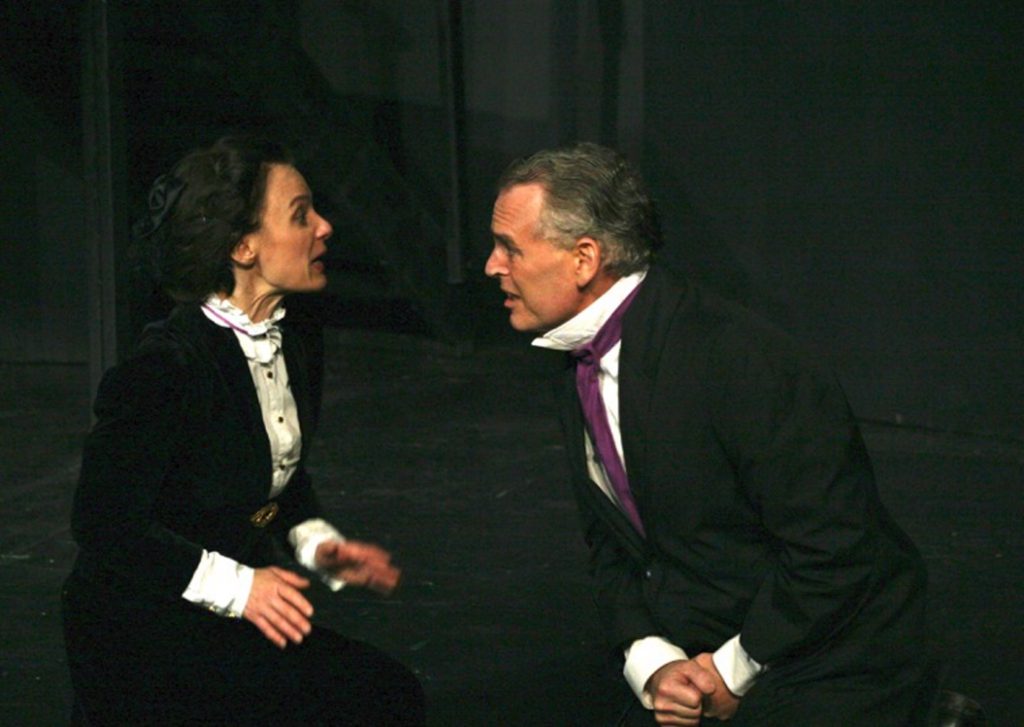The Valley’s oldest and newest professional summer theaters end their seasons this week with two very different plays. New Century Theatre closes its 26th season with Jar the Floor, a multigenerational family drama that furthers the company’s reputation for putting people of color center stage. And the three-year-old Silverthorne Theater Company, performing at Greenfield Community College, presents Jeffrey Hatcher’s chillingly effective adaptation of the classic horror tale The Turn of the Screw.
Ellen Kaplan’s crisp, creepy production of Henry James’s Gothic ghost story is given spine-tingling life by a pair of razor-sharp performances. Stephanie Carlson plays the (unnamed) young woman who, as the screw of the plot turns, may or may not be going mad. She’s been hired as governess to two young children by their uncle, a mysterious gentleman who wants nothing to do with them and gives her strict instructions to never communicate with him.
Carlson’s birdlike frame and wide, luminous eyes lend poignancy to the woman’s naïve vulnerability, as well as unexpected power to her dawning suspicion that something evil wants to possess the children, which then turns to a fearful but steely resolve to defeat it. Her performance keeps us on a knife-edge of doubt – is she pathetically crazy or alarmingly sane? – as the ground begins to shift beneath her, and us.
The playwright has pared down James’s characters to just three, and Stephen Eldredge plays them all: the children’s uncle, cold and haughty, if perhaps too suggestively ominous; the obsequious, hand-wringing housekeeper, Mrs. Grose; and ten-year-old Miles – yes-Miss obedient but eyes alight with mischief and terror. (Eldredge quick-changes characters but not costume; both he and Carlson are dressed throughout in Reba-Jean Shaw Pichette’s dark buttoned-up Victorian garb, lending the piece a story-theater aspect as well.)
The other child, eight-year-old Flora, is mute, the effect of a trauma in infancy, and unseen – by the audience, that is. She’s fully present to everyone on stage, which gives an extra layer of ambiguity to the governess’s sightings of two spectral figures she’s convinced are tempting the children.
Hatcher has emphasized and amplified the story’s undercurrent theme of Victorian sexual repression and “hysteria.” In one interpolation, the young woman hears her prospective employer suddenly ask, “Are you a virgin?” when he’s inquiring about a possible aversion. The word “seduced” keeps cropping up, and as the horror closes in on her, she becomes obsessed with the housekeeper’s hushed story of “infamous” goings-on between the two former servants whose spirits she comes to believe are contaminating her innocent charges.
The economy of plot and character in Hatcher’s version, drawn from James’s text and his own invention, is reflected in John Iverson’s stark set – a single chair and a high platform draped with a black shawl – and in Robert Moore’s moody lighting, which gives shape and shadow to the craggy mansion.
Cheryl West’s Jar the Floor, at New Century Theatre, seems at first to be taking us on a familiar dramatic journey: a bickering family in which bantering is a form of both affection and abuse, and where, when the digs begin to draw blood, painful home truths and long-buried secrets are exposed, leading to a catharsis that brings everyone closer together.
But in this case (spoiler alert) not exactly.
The play depicts a chain of mother-daughter relationships – four generations of African-American women gathered to celebrate the birthday of 90-year-old MaDear. The old woman is not always in the here or now, often seeing her departed husband in the room and imploring him to dance with/for her, to “jar the floor.”
All the women nurse lost or fractured dreams. MaDear’s sixtyish daughter Lola wanted to be a dancer, but now only yearns for a man to take care of her and passes the waiting time flaunting her sex drive (“I went straight from crawlin’ to swishin’ my behind,” she boasts). Her daughter MayDee is an academic in African-American studies (“teaching black folks how to be black,” her mother mocks), having abandoned her childhood wish to be a concert pianist. MayDee is waiting to find out if she has tenure while Lola is waiting for a “gigolo” – in essence, the same prize born of the same need.
The cue for escalating the usual wrangling is the arrival of May Dee’s daughter Vennie, with a (white) girlfriend in tow. That’s Raisa, recently separated from a husband who withdrew when she lost a breast to cancer. (I couldn’t quite tell if they are lovers, since both of them talk of hetero relationships and, in this production, rarely touch.)
When Vennie comes home, the domestic wrangling barely pauses. She’s an aspiring singer, but MayDee nags her about going to graduate school. Both Lola and MayDee pester their daughters mercilessly, telling them what’s best for them – which is what they themselves have settled for. All the women blame their mothers for the love and care they didn’t get, and all the mothers resent their daughters for the blame – each of them too wrapped up in their own needs to recognize the others’.
Greg Trochlil’s set – a comfortable open-plan kitchen/living room in a leafy Chicago suburb – reminds us that this is the post-Raisin in the Sun generation of African Americans who escaped the inner city into the middle class. But they haven’t evaded the timeless cascade of generational resentments and regrets. The four women – with Raisa an awkward witness – spend most of the play getting on each other’s “last nerve,” as Lola puts it.
On opening night last week, Gilbert McCauley’s production was still finding its feet and the actors their pace. The family banter fell too heavily, turning sardonic barbs into gratuitous put-downs that landed with more sting and less humor than I think was intended.
The five performers are marvelous: Johnnie Mae as MaDear, alternately crotchety and cute; Maggie Miller as Lola, blowsy and tipsy; Shannon Lamb ) as MayDee, striving to maintain a prim dignity (and grammatical standards; Toni Ann DeNoble ironic and fuck-you alienated as Vennie; and Brianna Sloane as bubbly, ingenuous Raisa.
At the end of the play’s long arc of squabbling, rancor and recriminations, there’s no real catharsis, no forgiving hugs. Instead, as in The Turn of the Screw, there’s a surprisingly refreshing sense of ambiguity.
Jar the Floor photos by Elizabeth Solaka
Turn of the Screw photos by Ellen Blanchette & John Iverson
Chris Rohmann is at StageStruck@crocker.com.







